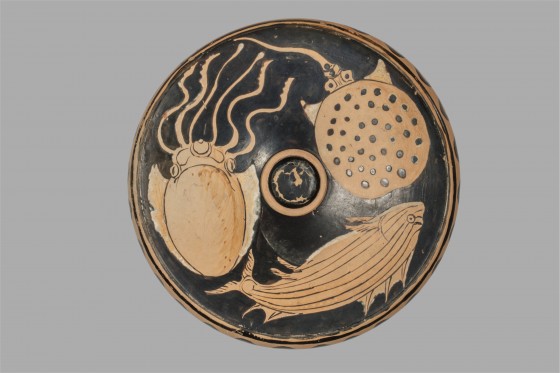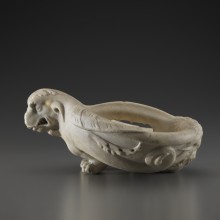
August 2020 Fine Arts
Hores de llum i de foscor by Josep Grau-Garriga
On display for the first time since its acquisition by the Fondation Gandur pour l'Art in 2018, the tapestry Hores de llum i de foscor by Josep Grau-Garriga is going on show at the famous Convent of La Tourette, a religious masterpiece by Le Corbusier, in Éveux, near Lyon. It will there join a selection of modern and contemporary tapestries aiming to interact with the building’s Modernist architecture.
See the artwork in the collectionJosep GRAU-GARRIGA (San Cugat del Vallès, Spain, 1929 – Saint-Mathurin-sur-Loire, France, 2011)
Hores de llum i de foscor
1986
Cotton, wool, silk, synthetic fibre, sheets and clothes (jeans, pyjamas, T-shirt)
320 x 700 cm
FGA-BA-GRAUG-0001
Fondation Gandur pour l'Art, Genève
Provenance
Artist’s studio
Family of the artist (by succession)
Galerie Nathalie Obadia, Paris, 2018
A monumental piece, Hores de llum i de foscor rises up like a wall of wool, cotton and silk. With its gleaming colours and uneven surface textures, this tapestry by Josep Grau-Garriga is a perfect embodiment of the "wall that clothes, lives and sings1" as described by the Swiss architect Alberto Camenzind in his preface to the catalogue of the second Tapestry Biennial in Lausanne in 1965. In that year, Josep Grau-Garriga was invited for the first time to take part in this event that united the international elite of textile art, along with his compatriots Aurèlia Muñoz and Luis Cienfuegos, making up the three Spanish artists included in the selection. This prestigious invitation to the shores of Lake Geneva, repeated in 1967, set the Catalonian artist apart as one of the most inventive tapestry designers of his generation, that of the pioneers of the New Tapestry movement, becoming one of its most inspired reformers from the late 1950s onwards.
Josep Grau-Garriga presided over the destiny of Catalonian tapestry from his native village of San Cugat del Vallès, near Barcelona, which grew into one of the most dynamic European centres for textile creation under his impetus. It notably flourished at the Aymat tapestry workshop2, where Grau-Garriga was appointed artistic director in 1957. Thanks to him, this local firm, which had perpetuated the traditional technique of weaving on high-warp looms inherited from the Gobelins manufactory in Paris, was transformed into a real incubator for the creative talents recruited to revitalise the tapestry cartoons3. The resulting innovative works experimented with avant-garde forms and textures increasingly far-removed from the clear lines of their origins, borrowed from the decorative repertoire of Jean Lurçat, for whom Grau-Garriga briefly worked as assistant4.
The latter’s woven oeuvre evolved in parallel with the new directions in which he led the workshop until he left the company in 1970. At that point, he took the decisive step of choosing to weave his own tapestries, a task he had until then delegated to the Aymat studio’s experienced weavers. At the same time, he stopped using tapestry cartoons or any other form of preparatory drawing and instead tackled the weaving directly on the loom, a liberating approach that freed up his skills and inspiration. There followed twenty years of technical and formal daring, culminating in the mid-1980s with Hores de llum i de foscor. This piece was completed in 1986 in the Barcelona workshop where, sixteen years previously, Grau-Garriga had completely mastered the technique of weaving so that he would never again be dependent on another tapestry weaver’s interpretation.

From 1960 onwards, texture took precedence over design in Grau-Garriga’s woven oeuvre. The initial results of the simple contrast between natural and synthetic fibres gradually increased in thickness over the years to reach rarely-equalled levels of surface texture. His obsession with matter was inspired by the pioneering examples of Jean Fautrier and Jean Dubuffet, whose Art informel works he was astounded to discover during an initiatory journey to Paris in 1957.
During this brief stay, he was equally impressed by the expressive force of the first Matterist works by Antoni Tàpies, with whom he later cooperated5. Like this Barcelonian artist’s paintings, which between them include all kinds of heterogeneous materials, Grau-Garriga’s tapestries incorporate manufactured textiles. These elements surreptitiously bring reality into the abstract composition of Hores de llum i de foscor. The old clothes (T-shirt, jeans, pyjamas and bed sheets) are caught up in the weft and serve to echo the artist's everyday life. The work’s Catalonian title, translated into English as Hours of Light and Darkness, reveals an earlier personal world, that of a happy childhood up until the outbreak of the Spanish Civil War (1936-1939). In symbolic terms, the luminous central section of the tapestry evokes the carefree years he spent gambolling in the fields around the once country town of San Cugat del Vallès.
From his rural escapades, the artist recalled the sacks full of grain, represented in the tapestry in the form of frayed bundles, veritable cornucopias overflowing with his memories of the hours of light. In contrast, the further our gaze travels from the sunny core of the tapestry, the darker the colours become, while the light gradually fades and then disappears into the hours of darkness of the civil war. The latter left a deep impression on the child from San Cugat who watched, appalled, as the Republican Army retreated. The work’s autobiographical dimension also finds expression in the actual weaving of the tapestry, which combines highly varied techniques and textural effects, just as life is an accumulation of seminal events and experiences.
Bertrand Dumas
Curator of the Fine Arts collection
Fondation Gandur pour l’Art, Genève, August 2020
Notes and references
- CAMENZIND, Alberto, 2ème Biennale internationale de la tapisserie, exhibition catalogue [Lausanne, Musée cantonal des Beaux-Arts, Palais de Rumine, 18.06 – 26.09.1965], p. XII, cited in KUENZI, André, La nouvelle tapisserie, Geneva, Éditions de Bonvent, 1973, p. 76.
- Alfombras y Tapices Aymat, a tapestry manufactory situated at San Cugat del Vallès and owned by Miquel Samaranch as from 1955. He commissioned Grau-Garriga’s first documented tapestry cartoon: Femme et chèvre (Woman and Goat), dating from 1957.
- These include Juan Hernàndez Pijuan, Joan Josep Tharrats, Albert Ràfols Casamada, Josep Guinovart, Jaume Muxart, Josep Subirachs and Jordi Gali.
- In 1958, Grau-Garriga spent two periods working in Jean Lurçat’s studio at Saint-Céré in the Lot department, during which he helped this master of tapestry to produce the cartoons for “Grand Charnier” (The Mass Grave) and “Champagne”, from the series Chant du monde (Song of the World).
- Discovered by Michel Tapié in 1954, Antoni Tàpies exhibited his work the following year at the Stadler gallery, his first solo show in Paris. He entrusted the Aymat workshop with the weaving of at least three tapestry cartoons between 1967 and 1969, reproduced in MIRALLES, Francesc (dir.), Escola Catalana de tapis. El tapis contemporani català, exhibition catalogue [Museu de San Cugat – Casa Aymat, San Cugat del Vallès, 13.03 – 17.05.2009; Centre Cultural Caixa de Terrassa, 19.11 – 10.01.2010], San Cugat del Vallès, Museu de San Cugat– Casa Aymat; Terrassa, Centre Cultural Caixa, pp. 110, 113 and 114.












